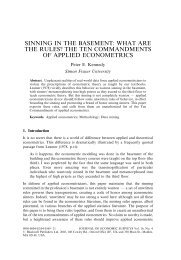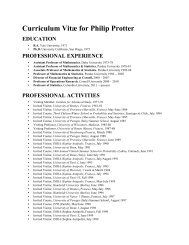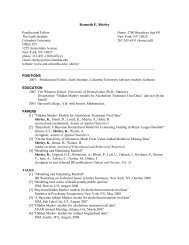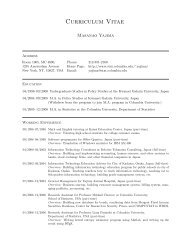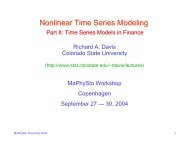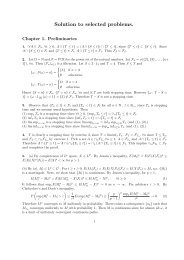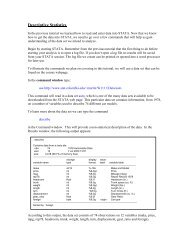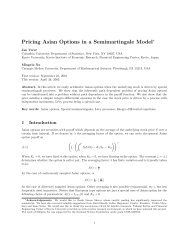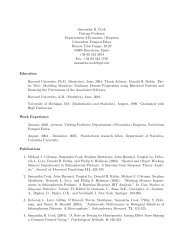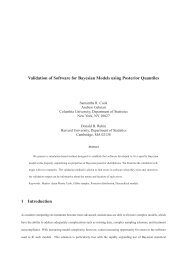The Self-Controlled Case Series - Department of Statistics ...
The Self-Controlled Case Series - Department of Statistics ...
The Self-Controlled Case Series - Department of Statistics ...
You also want an ePaper? Increase the reach of your titles
YUMPU automatically turns print PDFs into web optimized ePapers that Google loves.
<strong>Self</strong>-<strong>Controlled</strong> <strong>Case</strong> <strong>Series</strong> 3<br />
Longitudinal observational databases (LODs) provide time-stamped patientlevel<br />
medical information, such as periods <strong>of</strong> drug exposure and dates <strong>of</strong> diagnoses.<br />
Typical examples include medical claims databases and electronic<br />
health record systems. <strong>The</strong> scale <strong>of</strong> some <strong>of</strong> these databases presents interesting<br />
computational challenges – the larger claims databases contain upwards<br />
<strong>of</strong> 50 million lives with up to 10 years <strong>of</strong> data per life. A nascent literature on<br />
risk identification and refinement in LODs now exists including adaptations<br />
<strong>of</strong> some <strong>of</strong> the Bayesian methods developed in the SRS context.<br />
In this paper we consider one particular approach, the self-controlled case<br />
series. We present a Bayesian analysis <strong>of</strong> this method and provide an overview<br />
<strong>of</strong> some recent related developments.<br />
2. LONGITUDINAL OBSERVATIONAL DATABASES<br />
Figure 1: A longitudinal observational dataset with three patients, three distinct<br />
drugs (A, B, and C) and two distinct outcome events (X and O)<br />
Figure 1 provides a schematic <strong>of</strong> LOD data for coverage periods for three<br />
patients. Patient 1 was exposed to drug A during two separate exposure periods.<br />
While on drug A, patient 1 experienced outcome event X on three<br />
different occasions. Patient 2 was exposed to drugs A, B, and C during successive<br />
non-overlapping eras. Patient 2 experienced outcome event X before<br />
consuming any drugs and also experienced outcome event X while consuming<br />
drug C. Patient 3 was exposed to drug C and later starting taking drug B in<br />
addition to drug C. This patient experienced outcome event O while taking<br />
both B and C and later experienced outcome events O and X after the drug B<br />
and C eras had ended. We note that LODs generally provide drug prescription<br />
dates so that construction <strong>of</strong> drug “eras” involves subtle decisions concerning<br />
gaps between successive prescriptions as well as <strong>of</strong>f-drug risk periods. With<br />
outcome events, we think <strong>of</strong> outcomes as occurring at points in time whereas<br />
in truth outcomes are processes spread out in time.<br />
<strong>The</strong> methodological challenge is to estimate the strength <strong>of</strong> the association<br />
between each drug and each outcome event, while appropriately accounting<br />
for covariates such as other drugs and outcome events, patient demographics,<br />
etc.<br />
In this context, several papers have looked at vaccine safety, for example,<br />
Lieu et al. (2007), McClure et al. (2008), and Walker (2009). <strong>The</strong> Vaccine



